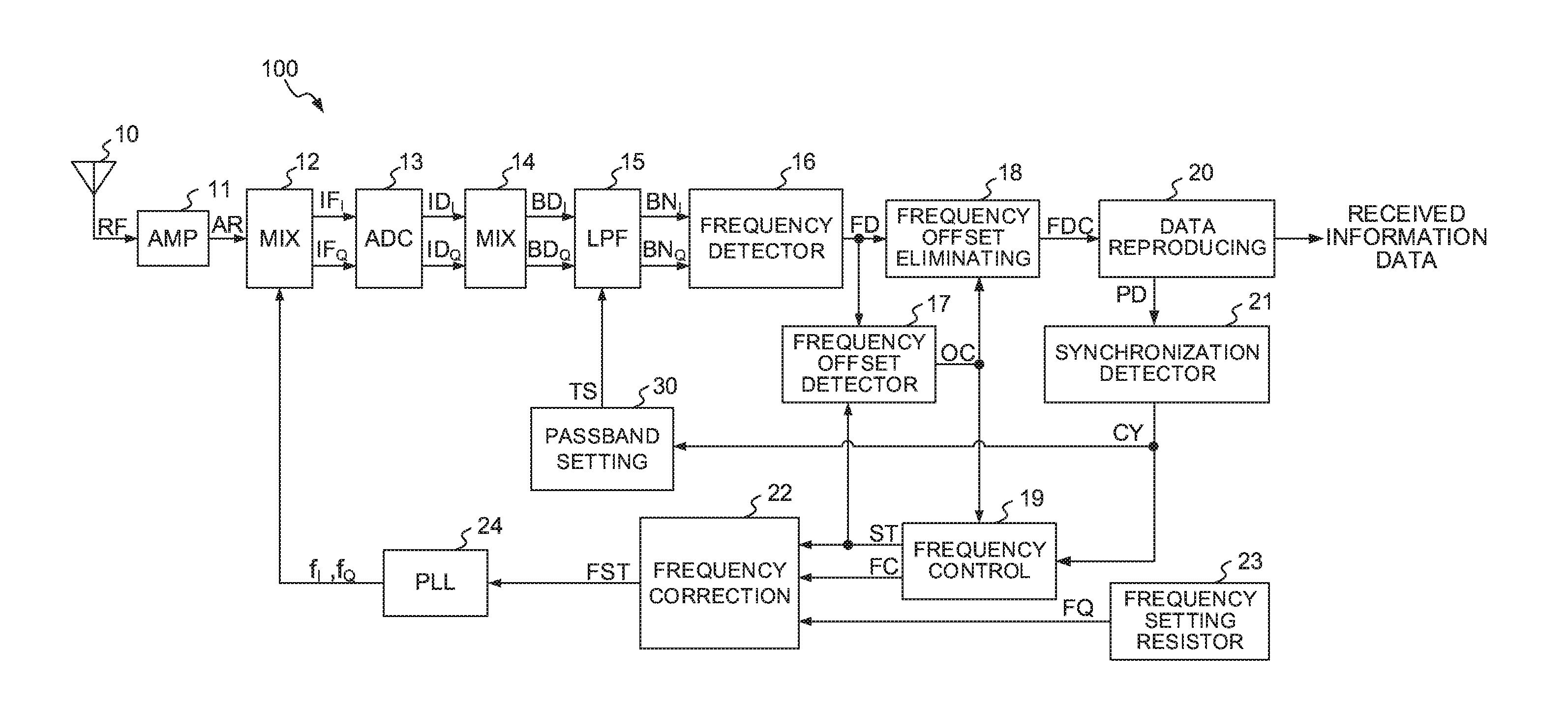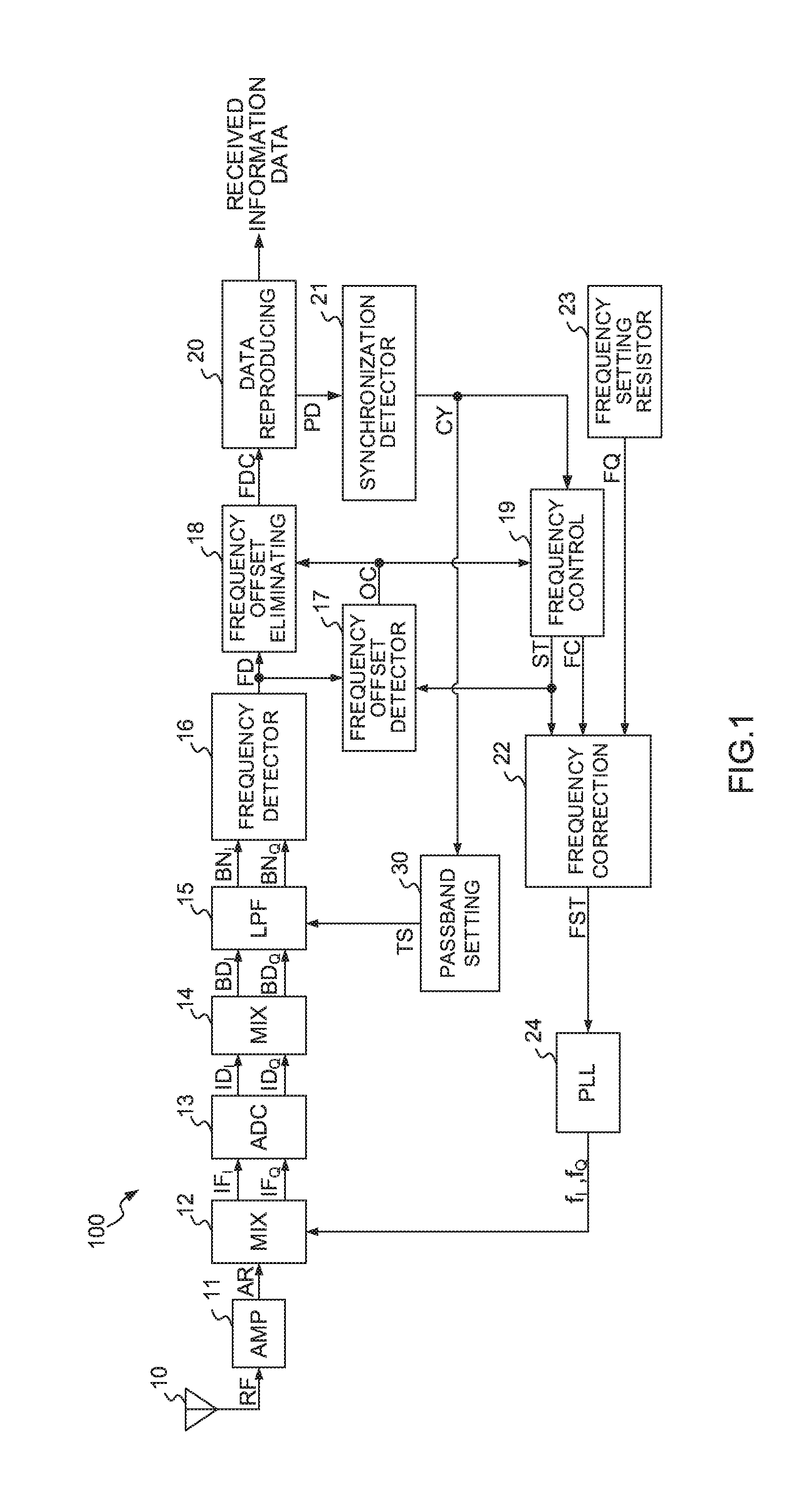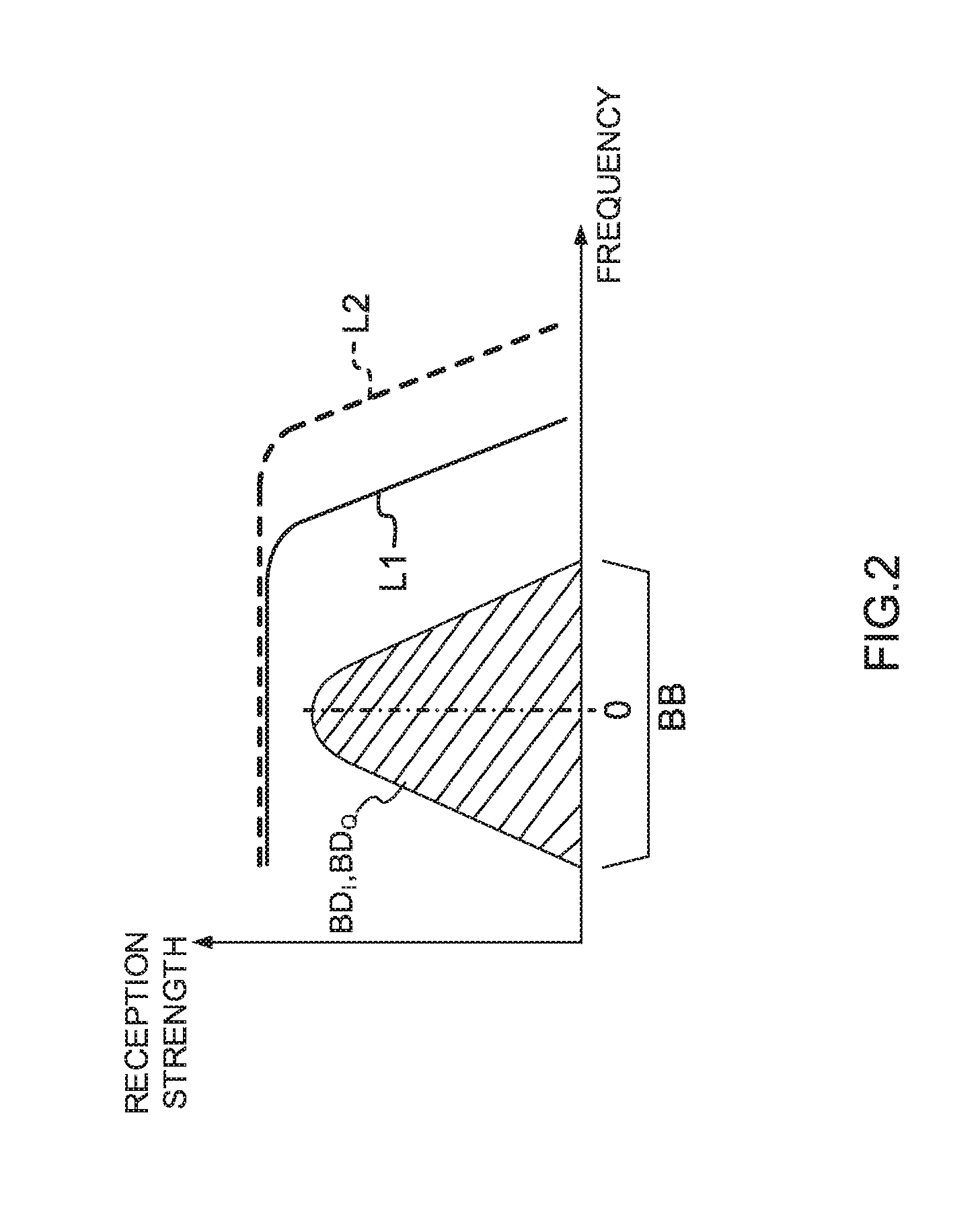Receiving apparatus and receiving method
a technology of receiving apparatus and receiving method, which is applied in the field of receiving apparatus, can solve the problems of reducing reception sensitivity and increasing the amount of noise which passes through the lpf, and achieve the effects of reducing noise components, high reception sensitivity, and demodulating user data
- Summary
- Abstract
- Description
- Claims
- Application Information
AI Technical Summary
Benefits of technology
Problems solved by technology
Method used
Image
Examples
Embodiment Construction
[0031]FIG. 1 is a block diagram showing an entire configuration of a receiving apparatus 100 according to the present invention.
[0032]An antenna 10 receives a wireless transmission wave which is transmitted from a transmission apparatus (not shown). The antenna 10 supplies an amplifier which may be a low noise amplifier with a high frequency signal RF on the basis of the wireless transmission wave as illustrated in FIG. 1. The wireless transmission wave is modulated in frequency in accordance with data sequences. Each frame of the data sequences comprises a preamble part consisting of a specific bit pattern representing a synchronization signal, a synchronization word representing a leading position of a user data piece, the user data pieces representing such information as audio, video and text. A digital modulation such as FSK is used as a modulation scheme in the modulation.
[0033]An amplifier 11 supplies a mixer 12 with a received signal AR obtained by amplifying the high frequen...
PUM
 Login to View More
Login to View More Abstract
Description
Claims
Application Information
 Login to View More
Login to View More - R&D
- Intellectual Property
- Life Sciences
- Materials
- Tech Scout
- Unparalleled Data Quality
- Higher Quality Content
- 60% Fewer Hallucinations
Browse by: Latest US Patents, China's latest patents, Technical Efficacy Thesaurus, Application Domain, Technology Topic, Popular Technical Reports.
© 2025 PatSnap. All rights reserved.Legal|Privacy policy|Modern Slavery Act Transparency Statement|Sitemap|About US| Contact US: help@patsnap.com



